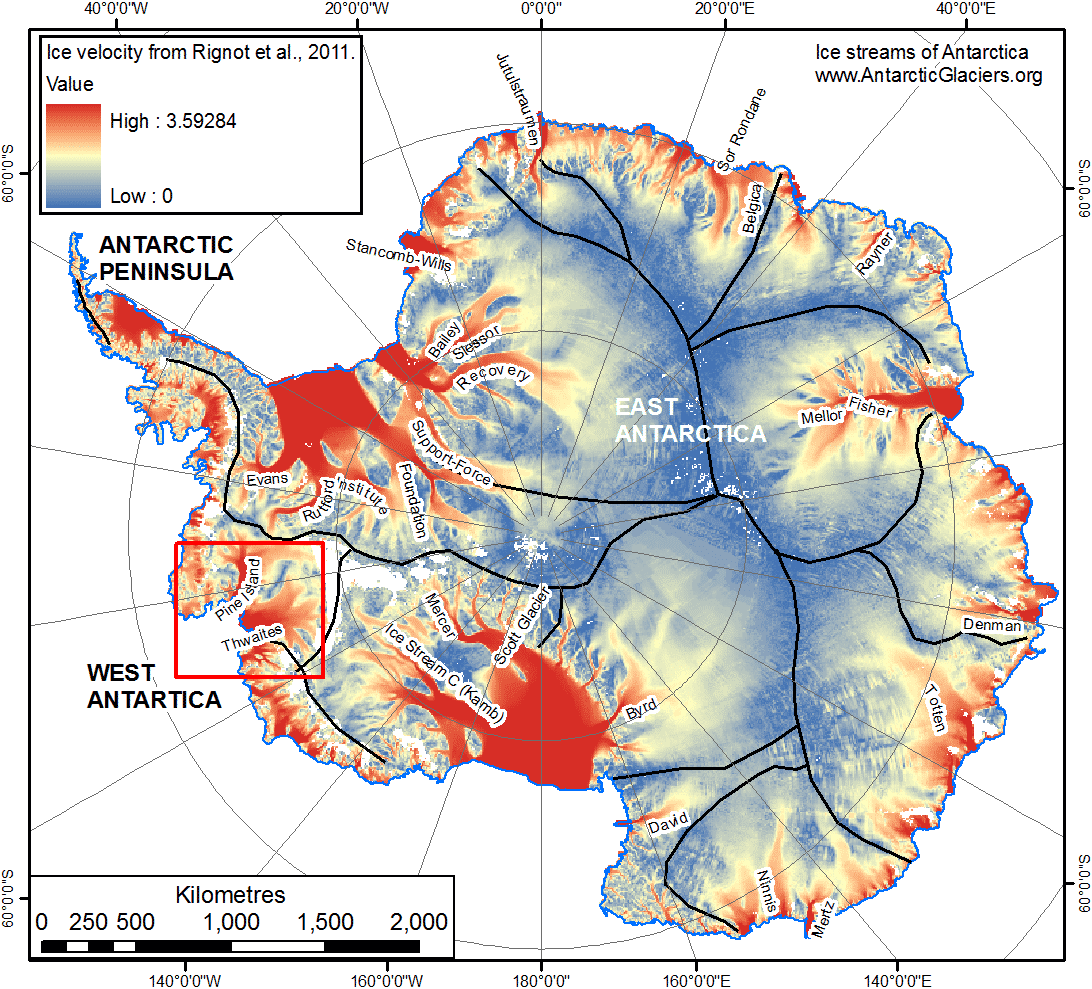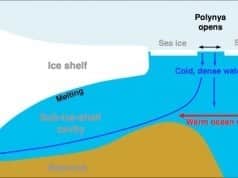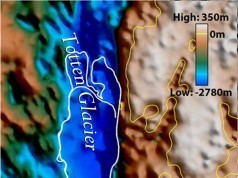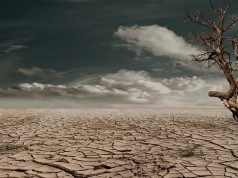Unstoppable Retreat Of Glacial Antarctica Officially Launched:
Two independent teams working differently arrived to similar conclusions about the main glaciers plunging in Antarctica’s Amundsen Sea next to the Pines Island Glacier (PIG) (see map below).
Modelling and radar data from Amundsen Sea suggest current melting will run away.
This has to be put in the context that, as far as official science was concerned, this was not supposed to happen. A completely independent agent such as yours truly predicted this many years ago, and incredibly much worse, because of a confluence of very precise reasons.
Pine Island Glacier covers about 160,000 square kilometers, about two-thirds the area of Great Britain. Just one glacier.
Like the Thwaites, Smith, Haynes, Pope, Smith and Kohler Glaciers in this region – the PIG has been thinning and retreating rapidly. The Twaithes is much larger than PIG.
Joughin’s team found that Twaithes glacier’s grounding line – the border between sections of ice that float on the sea and sections that rest on the bedrock – currently sits about 600 meters below sea level (2,000 feet!). But 60 to 80 kilometers inland, the bedrock topography under the glacier drops to more than 1.2 kilometer below sea level!
When the grounding line reaches that inward-sloping basin, the glacier’s retreat will speed up dramatically, Joughin’s team calculates (I have explained the same phenomenon will happen in giant basins of East Antarctica in “Sun Cooling, Ice Melting“).
The reason for this is that two degree Celsius water is denser than colder water (!), and will slip below the ice. That will happen in a matter of centuries, the team suggested (to please the higher-ups).
The team has, of course, to suggest total melting would take centuries, otherwise it would irritate the powers that be, and, thus, the financing of the entire field.
These scientists have to earn a living, feed their families, bask in successful careers. They have comfortable houses, cars. They sell not just science, but hope. As the great mathematician Gregory Perelman, who solved the Soul, Thurston and Poincare’ conjectures, among other things, said, about American mathematics:
“It’s possible to sell a theorem and it’s possible to buy it. Even if you don’t have anything to do with it.”
(Perelman was talking about a few dozen top mathematicians that I personally knew for years, before getting as disgusted by their dishonesty, not to say viciousness, as he later would be!)
If that intrusion of the lowest human traits happens in math, it’s worse in much more money oriented fields. Such as the confluence of the fossil fuel plutocracy and climate science (typical representative of fossil burn plutocracy: Vlad Putin.)
This buying and selling of theorems is exemplary of the problem of mixing power, politics and money, as is the case in the mightiest “private” or “public” universities in the USA (and wherever the American university system is imitated). I am NOT saying that the system these universities (Harvard, Princeton, Stanford, pseudo-public Berkeley, etc.) represent is to be condemned and eradicated like RasPutin, just that it needs to be taken for what it is: a plutophile system.
Plutophilia needs to be counterbalanced by the love of wisdom. (Thus a true public university system ought to be preserved.)
In the case of these glaciers, wisdom consists into realizing that considering that it will take centuries for these glaciers to melt, is wishful thinking. The evidence, both factual and theoretical, points the other way.
Grounding lines determined by radar from now defunct European satellites were found in some cases to retreat by more than one kilometer per year.
Radar data show that the Pine Island Glacier retreated by 31 kilometers between 1992 and 2011. It retreated fastest between 2005 and 2009.
Rignot’s team found no underlying ridge that could potentially slow the retreat, for any of the glaciers studied.“These systems, whether Greenland or Antarctica, are changing on faster timescales than we expected. We are kind of rediscovering that every day,” says Rignot.
Telling us that it will take at most centuries to melt those glaciers is exactly the sort of politeness authorities and the plutocrats who have elected (“financed”) them would expect.
Yet, is that science? Indeed, how do they know it will take centuries? Well, they roll out “models” that are as good as what they put inside them, and no better. Let’s reason a bit.
Why will the glaciers melt ever faster? The glaciers will melt ever faster because their cold bellies rest on what would be the new ocean bottom after enough warm sea water has insinuated itself below.
The seas are warming up around Antarctica, because wind speeds have augmented, augmenting the up-welling, another of these run-about effects from global warming. Around Antarctica, surface waters are colder than those in the depths. Wind speed have augmented because of my (six year old) generalization of the Equipartition of Energy Theorem that rules the climate (and also all of thermodynamics!).
Such phenomena as the warming of the underbellies of ice sheets by sea water, tend to be exponential, not linear. And we have the proof: the Hudson Bay, now a sea, transformed itself from ice shield to ocean in a few decades. That, in turn, made the Mediterranean spill catastrophically into the fertile Black Sea area, flooding there around 100,000 square kilometers in no more than 30 years. (That gave the legend of Noah’s Ark.)
Notice that retreating over a continent at one kilometer per year (the speed of the Labrador-Quebec Laurentide ice sheet disintegration), is probably slower by orders of magnitudes to that a sub-oceanic margin. The “forcing” at the time was caused by more insolation, 8,200 years ago (from more sun in July-August then). Now, though, the situation is worse as the “forcing” is from a low lying blanket of man-made greenhouse gases (so, instead of warming equally the entire atmosphere, the greenhouse concentrates the warming at low altitudes, say below 8,000 meters; the stratosphere is actually cooling!).
It was already known, in 1990, that the disintegration of the gigantic Laurentide ice sheet centered around Hudson Bay took no more than 4 centuries. (That ice sheet used to be more than 3,000 meters thick, being the world’s largest, 20,000 years ago).
It boils down to this: is it wiser to risk underestimating the speed of melting of these glaciers, or is it wiser to risk overestimating said speed? Obviously, for those who are anxious to please their masters who feed them, it’s wiser to say there will be a problem, but only in a generation or two.
For those who don’t want to risk the biosphere we know, it’s much wiser to consider the worst possible case. Remember inertia: short of astronomical objects, the system with the most inertia is the biosphere itself. That’s a system that has been capable of maintaining the planet’s temperature within fifteen degrees (Celsius) of the present temperature for more than three billion years. It has enormous inertia. However, our stupid obstinacy to burn all the carbon we can find has definitively got that enormous system to start moving.
We imparted acceleration to the biosphere. We are pushing the biosphere around. And we know that the force we are applying is only augmenting. That means the acceleration, and even more the speed of the change, is going to get worse quick. That’s basic dynamics, first quarter of undergraduate physics.
Of course, neither the leaders of France, Great Britain, or the USA has taken such a course: they are basically ignoramuses at the helm (and Angela Merkel, who knows plenty of physics, made a risky bet she seems to be losing).
Clearly, we should instead apply the brakes to the maximum (instead of flooring the accelerator). What would be the price of this cautious? None, for common people: hard work to de-carbonize the world economy would require dozens of millions to be employed that way, in the West alone.
That, of course, is a scary thought for plutocrats, who much prefer us unemployed, impotent, and despondent.
Patrice Ayme






